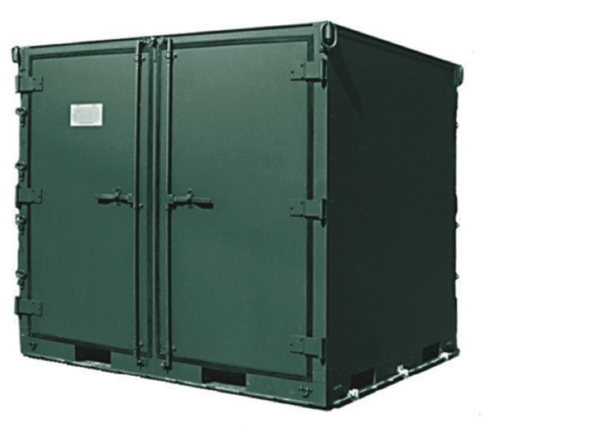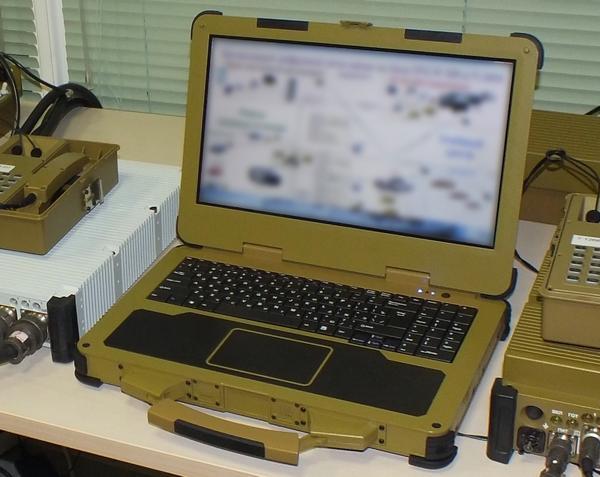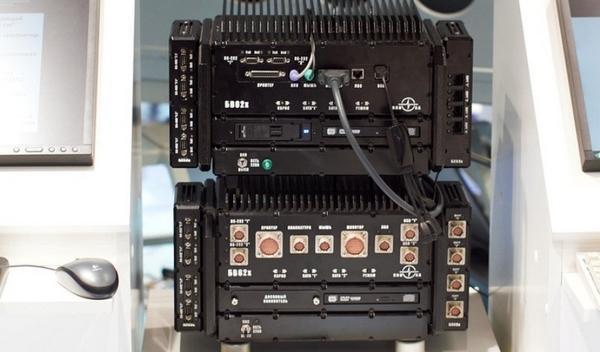Iron for nuclear winter - with protection from cold, fog and smoke

Usually, military iron is shrouded in a halo of incredible reliability and vitality. However, this did not prevent the American destroyer "Donald Cook" in April 2014 to "go blind" and "go deaf" after applying the Khibiny electronic warfare complex against him. But there was a lot of computer equipment on board, albeit a specialized one - is there really no protection from EMR?
In general, if you are also interested in military IT subjects, then I suggest a small excursion into the sphere of “combat” and simply protected iron.
Given the secrecy of the military sphere and the stinginess of open sources, some information may already be irrelevant, but nevertheless it shows the big picture. In some cases, we had to compensate for the lack of information with logical reasoning - correct and supplement if you notice inconsistencies.
Armored, shockproof and to prevent fog
If we omit lengthy arguments about the requirements for the reliability of military equipment, then the ideal server should have the following features:
shockproof bulletproof housing;
tightness up to containment of dust, salt fog, water and fire;
no moving parts, own passive cooling;
ability to survive temperature drops from -60 to +55, as well as humidity and surges in atmospheric pressure;
tightly assembled components, high-quality chip wiring;
encryption of information at the hardware level;
hard drives with the function of deleting data without the possibility of recovery (as implemented for military flash drives );
protection from natural and man-made EMR ;
- ability to survive a nuclear explosion - except for electromagnetic radiation, is a large instantaneous dose of gamma / neutron radiation.
And some requirements are mutually exclusive, so the non-ideality of the equipment has to be compensated by the correct room. A competently designed “shelter” for the server can take on some of the functions - for example, protection from fogs and EMR.
DPC "a-la Militare"
Almost a decade ago, the Russian company Sitronics (today it is NVision Group) announced a line of mobile data centers called Daterium, focused on different climatic conditions. The data center platform is a transport container on 7 racks with a height of 42U with all the necessary engineering equipment.
In addition to the basic kit, there is a module of increased availability - it provides full redundancy of power supply systems and its distribution. Based on the Daterium solutions, you can assemble a modular data center containing up to 28 racks, which will be equivalent to a stationary data center with a usable area of 120 square meters. meters

Daterium is adapted for all occasions.
Although the Daterium was presented as a data center for industrial use, it is obvious that such an all-weather solution to ensure mobility, scalability and speed of deployment can be the basis of the data center not only for geologists and oil industry workers, but also for the military.
The same is considered abroad - a couple of years ago, Dell also offered its own version of a mobile data center called the Tactical Mobile Data Center. The basis is a modified container ISU-96, inside which 3 units of 42U or 1 volume of 120U.

US Answer Dateriumu - Tactical Mobile Data Center
This version of the data center is armed for all occasions:
protection from weather conditions, sandstorms and dust;
built-in fire extinguishing system;
air cooling with backup ventilation system;
security monitoring systems, including video cameras, intrusion detectors;
- for communication with the world - external copper, fiber optic or BNC connector.
The US military and potential buyers from other countries are already interested in the complex, despite the decent price - without servers and data center switches costs as much as $ 221,500.
Not a single server

Army notebook manufactured by OPK ("United Instrument-Making Corporation" in collaboration with the concern "Constellation")
This Russian-made military notebook is used as part of a digital tactical radio communications system. He has everything you need to survive:
protected sealed enclosure means protection from dust, moisture and water, fire, as well as the ability to withstand vibration loads, shocks and falls from a small height;
the ability to work at temperatures from -40 ° C to + 50 ° C;
- increased level of protection for connectors of external pluggable ports due to their active use in the field.
The army servers are clearly no worse: the defense complex has created the Voskhod computer , which is designed to work at command posts at various levels of control.

Its characteristics:
shockproof and hermetic housing;
passive cooling system;
temperature range from -60 ° C to + 55 ° C;
ability to work in motion;
- The power of only 35 watts is 3-4 times less than the average office computer consumption.
The computer platform is also suitable as a basic element for a “special purpose computer” - from protected “army” tablets to mobile and stationary workstations. Or it can become a full-fledged server, considering that it is built on the basis of the Russian processor with the COMDIV architecture. This architecture allows you to combine processors in a cluster with the number of cores from a few hundred to a thousand or more, achieving supercomputer performance.
The military too
My domestic military hardware has always been associated with Russian-made processors, which were known for the lack of popular architectures like x86, low characteristics, etc. But today the situation has changed dramatically.
The above-mentioned computer "Voskhod" already has two cores with a clock frequency of 800 MHz and the amount of DDR3 1200 RAM is from 4GB to 8GB. The army notebook of the same OPK is based on the sixth generation processor with an operating frequency of 3.5 GHz. These characteristics are almost identical to the capabilities of the popular "civilian" servers and allow you to solve serious military tasks.
Another good example is the Getac X500 military notebook with a high degree of protection, equipped with an Intel Core i5-520M or Intel Core i7-620M processor and an nVidia GT 330M 1024MB DDR3 Graphic. It costs 346 thousand rubles . Such a high cost is dictated not only by the serious protection of the device, but also by the necessary chips for each military:
collecting intelligence data from various information devices;
support of special military software and work with large volumes of graphic data of different formats;
- determination of the exact position of the enemy positions and his own troops.
Gradually, military equipment ceases to be something, albeit reliable, but always “square” in convenience and poor in its characteristics. Army hardware and software in its capabilities, convenience and speed is already quite comparable with the models of the consumer market.
Conclusion
In Europe - and indeed in Russia - in recent years, data centers have appeared that are located in underground nuclear bunkers. WikiLeaks has long been "living" in one of these bunkers in Sweden. And, given the current information tensions between countries, it is likely that the emergence of such secure data centers is not just some kind of fashion. From this point of view, the use of military servers in such centers becomes quite logical.
')
Source: https://habr.com/ru/post/325336/
All Articles